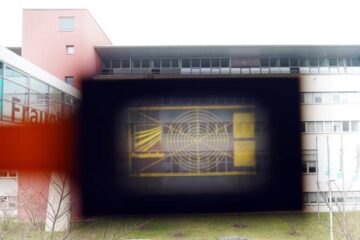Cellular therapy of a stroke

Under anaesthetic, the rats’ medium cerebral artery was pinched in order to impair the blood supply in the left hemisphere. Three days later, the animals were intravenously injected the mesenchymal stem cells (MSC) from the marrow.
These cells are able to differentiate into the cells of other tissues, including nerve cells. Part of the animals was false-operated – the operation was performed on them but the artery had not been pinched. The reference group animals’ artery was pinched but the stem cells were not introduced.
The MSCs for transplantation were singled out from the marrow of thigh-bones of other animals of the same laboratory line, the MSCs were marked by a fluorescent dye and injected into the laboratory rats’ caudal vein. The animals’ cerebrum was investigated six weeks later.
There turned out to be unexpectedly few luminescent cells in the cerebrum specimen, and they were located not in the affected cortex zone but nearby ventricles of brain. This is strange as the specialists of “Tans-Technologies” have experimentally proved that stem cells introduced into the bloodstream come to the damaged tissue in several days. But nevertheless the stem cells introduction turned out effective for restoration of the affected brain.
The area of affected zone with the experimental rats was less than that with the untreated animals. Transplantation enables to preserve the parts of brain responsible for formation of emotions and motion regulation. With the untreated rats, these sections were noticeably damaged. Their stroke area was surrounded with an extensive zone of dying nerve cells.
The stem cells increased almost by twice the number of blood vessels in the injured left hemisphere, which contributed to cerebral blood supply restoration. It is interesting that more vessels appeared in the symmetrical unaffected hemisphere. This phenomenon has not been described in scientific publications, therefore the researchers are planning to investigate it separately.
Thanks to the stem cells, the rats successfully passed the test in two or three weeks after transplantation. They became calmer, they better orientated themselves in space and memorized disposition of surrounding objects. Besides, the animals restored symmetry of reactions in the left and the right side of the body and in utilization of extremities.
In the researchers’ opinion, the mesenchymal stem cells (MSCs) is practically an ideal material for cellular therapy as they can be introduced directly into the blood. This allows to avoid serious operations under general anaesthetic, which are necessary for cell injection directly into the brain.
Although the researchers are now unable to fully explain the MSCs mechanism of action, but their beneficial action on the brain after a stroke is evident. Possibly, in case of earlier MSC transplantation, more cells will be able to get into the brain, and the beneficial action will be even more apparent.
Media Contact
More Information:
http://www.informnauka.ruAll latest news from the category: Life Sciences and Chemistry
Articles and reports from the Life Sciences and chemistry area deal with applied and basic research into modern biology, chemistry and human medicine.
Valuable information can be found on a range of life sciences fields including bacteriology, biochemistry, bionics, bioinformatics, biophysics, biotechnology, genetics, geobotany, human biology, marine biology, microbiology, molecular biology, cellular biology, zoology, bioinorganic chemistry, microchemistry and environmental chemistry.
Newest articles

Advanced Brain Science Without Coding Expertise
Researchers at Helmholtz Munich and the LMU University Hospital Munich introduce DELiVR, offering a new AI-based approach to the complex task of brain cell mapping. The deep learning tool democratizes…

Transparent emissive microdisplays
… for ultra-light and compact augmented reality systems. As part of the HOT project (High-performance transparent and flexible microelectronics for photonic and optical applications), scientists from the Fraunhofer Institute for…

Bringing bio-inspired robots to life
Nebraska researcher Eric Markvicka gets NSF CAREER Award to pursue manufacture of novel materials for soft robotics and stretchable electronics. Engineers are increasingly eager to develop robots that mimic the…





















